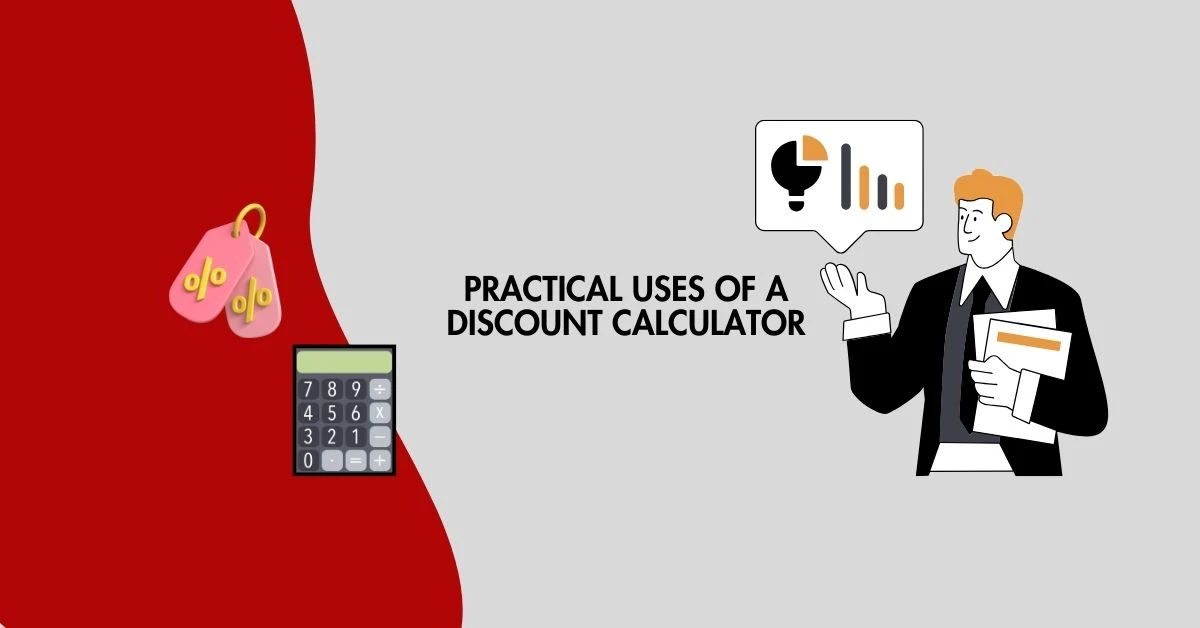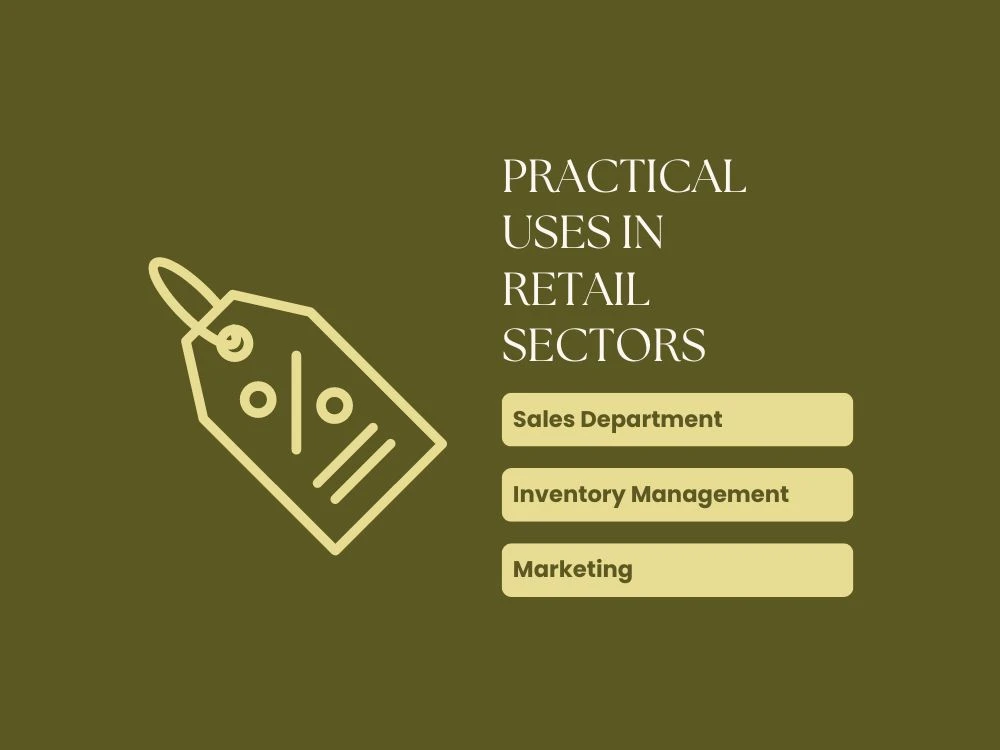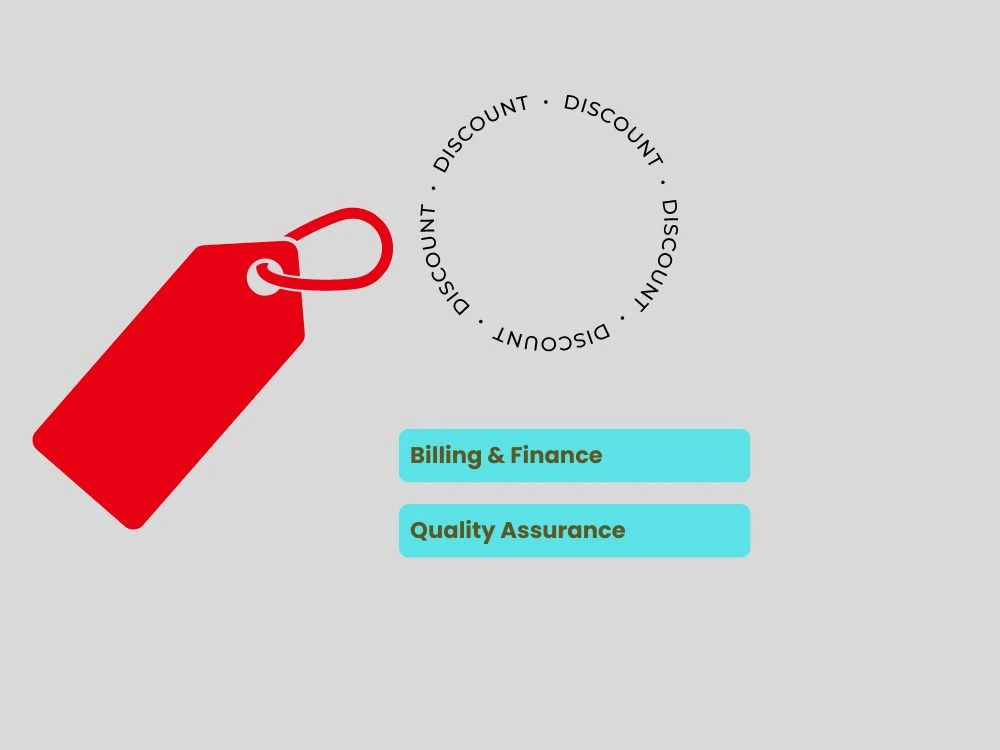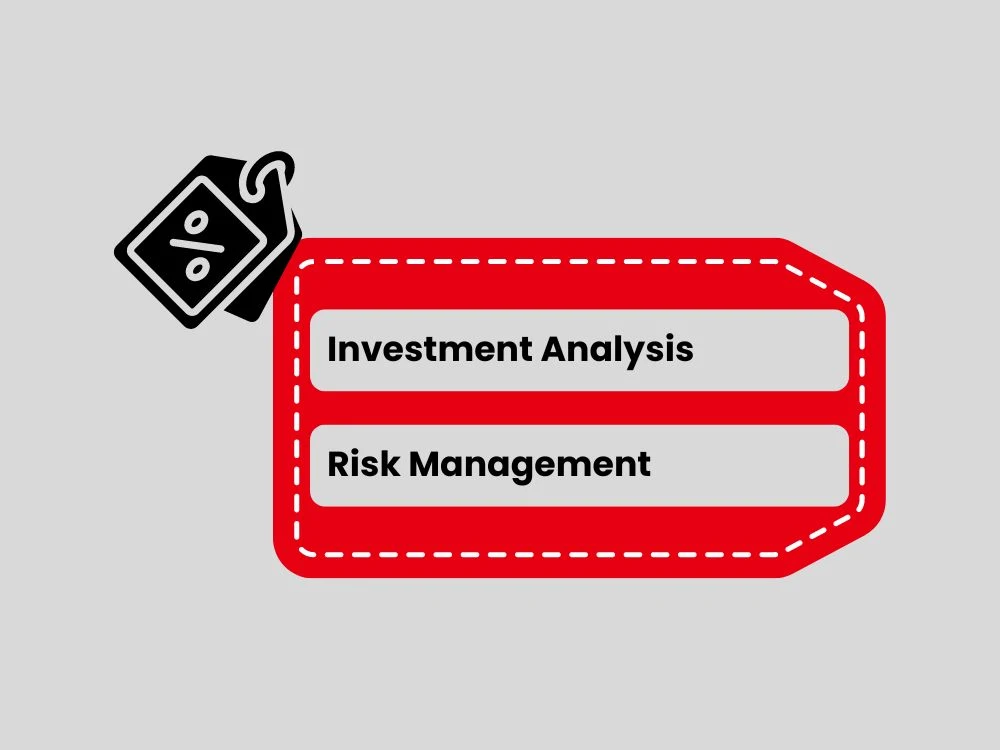
Practical Uses of a Discount Calculator in Different Business Sectors
A discount calculator is a valuable tool for determining the discount amount and the final discounted price. It’s widely used across various business sectors to streamline tasks and support multiple functions. Different departments leverage this tool to effectively plan and execute their activities.
The tool offers numerous benefits to organizations such as boosting sales, attracting customers, enhancing product or service quality, and contributing to overall business success.
Key Takeaways
- Understand the practical uses of utilizing a discount calculator.
- Identify different business sectors and how they utilize a discount calculator for various business functions.
- A step-by-step guide to using a discount calculator.
Practical Uses in the Retail Sector

A. Sales Department
Enhancing sales is one of the primary concerns of sales staff in retail sectors. Offering various sales promotions with appropriate discounts is one method used by the sales team to target potential customers.
This approach helps improve sales and match sales targets. Let’s see a practical example to understand this clearly:
A retail business offers the following discounts for its 3 different product categories:
- Dairy Products – A 10% discount ends in three months from the current date
- Furniture – 20% discount ends in two months from the current date
- Electronics – 15% discount ends in a month from the current date
- The average price of a dairy product - $45
- The average price of a furniture - $485
- The average price of an electronic product - $370
According to these details, the discounted prices and savings to the customers for the products are calculated as follows:
i) Discount for the dairy product = Average price of dairy * 10%
- = $45 * 10%
- = $4.5 as a discount and the sales price after the discount is $40.5
ii) Discount for the furniture = Average Price of furniture * 20%
- = $485 * 20
- = $97 as a discount and the sales price after the discount is $388
iii) Discount for the electronic product = Average price of an electronic product * 15%
- = $370 * 15%
- = $55.5 as a discount and the sales price after the discount is $314.5
This example illustrates that for each category how much discount is offered by the retail business. Plus, what could they consider as sales price? Until the discount period, they may sell a huge number of products.
Calculating the discount as a whole will be useful to determine how much they have offered as discounts and how much actual sales revenue is generated.
B. Inventory Management
Retail sectors should plan their inventory appropriately. Inventory management is a prominent task where holding inventory incurs substantial costs to the retail firms. Meanwhile, offering discounts to clear the slow-moving inventories is a good technique used by retail businesses.
For example, a retail business identifies that their products like toys and dining appliances are slow-moving in sales. So, they decided to put on an attractive discount for both product categories to clear the stock.
- Toys – 30% discount
- Dining Appliances – 40%
- Total inventory value of toys - $16000
- Total inventory value of dining appliances - $22500
i) Discount for toys = $16000 * 30%
- = $4800 total discount and total sales value after discount is $11200
ii) Discount for dining appliances = $22500 * 40%
- = $9000 and total sales value after discount is $13500
Here, the attractive discount option can motivate customers to buy from the retail firm. However, the discount is offered to cover the inventory procurement costs without any additional profits. It saves retail firms' inventory holding costs and to better manage the inventories.
Here, they can utilize a discount calculator to calculate the discount easily. It will help determine how much they should need to cover inventory purchase costs. This will also help them avoid losses.
C. Marketing
In the marketing section of a retail business firm, discount is viewed as a marketing strategy to improve customer purchases and engagement. Marketing people suggest offering intermittent or seasonal discounts to improve sales and customer attachments.
For example, the marketing section of a retail firm suggested offering a 12% discount for all of their products except high-value products above $1000. They also announced that this offer is valid until Thanksgiving is over.
This approach led them to acquire new customers and an eye-catching sales figure. Approximately they could increase sales by a whopping 24% and 18% new customers to the business. They accounted sales with including discounts of $88200 which equals to a discount amount of:
- Discount amount = $88200 * 12%
- = $10584 as discount and $77616 as sales value after discount deductions.
- The retail firm still generated 14% profit which equals $9531.79 and the cost of goods sold was $68084.21.
Based on this discount strategy implementation, the firm has identified that offering discounts is a successful approach for future product marketing and customer acquisition.
Practical Uses in the Healthcare Sector

A. Billing and Finance
Healthcare sectors offer medical services where their billing and finance division is responsible for collecting medical charges and offering other financial matters. They use discount calculators to identify the discount amount offered to patients.
The following example of a healthcare sector explains this well:
A billing and finance division of a healthcare firm offered a 25% discount for veteran persons’ medical charges. During the time of the discount offer, a total number of 172 veteran people took medical services from the firm. The medical charges accumulated in $66400 total value without discount calculated.
- Discount of medical charges = $66400 * 25%
- = $16600 as discount and $49800 after discount deductions
B. Quality Assurance
The quality assurance department of a healthcare sector utilizes a discount calculator to analyze the cost-effectiveness when they procure medical supplies from the vendors. They negotiate discounts with the suppliers and this tool is a great assistance for calculation.
Let’s take a look at this example of a healthcare sector, the quality assurance department which negotiated with the vendor for a 15% discount for necessary medical supplies. This has amounted to the following:
- Purchased Medical Supplies for last month - $43700
- Discount percentage – 15%
- Discount = $43700 * 15% = $6555 as savings
- Money paid after discount = $43700 - $6555 = $37145
Practical Uses in the Finance Sector

A. Investment Analysis
Finance sectors perform investment analysis to check their returns and potential risks. Identifying this thing is crucial to making financial decisions. Finance sectors utilize a discount calculator to identify the discounted cash flow (DCF) to evaluate the present value of future cash flows:
Let’s find the below example to understand this clearly:
A finance firm estimated a future cash flow of steady rental income of $15000 for each of the next 5 years. After 5 years they planned to sell the property. They use a discount rate of 5%. To identify each year's cash flow as follows:
- Year 01 - $15000 / (1+ 0.05) ^1 = $14285.71
- Year 02 - $15000 / (1+0.05) ^2 = $13605.44
- Year 03 - $15000 / (1+0.05) ^3 = $12953.37
- Year 04 - $15000 / (1+0.05) ^4 = $12345.68
- Year 05 - $15000 / (1+0.05) ^5 = $11755.49
The total future cash flow in present value is calculated as:
- $14285.71 + $13605.44 + $12953.37 + $12345.68 + $11755.49 = $64945.69
This analysis helps make an evaluation and financial analysis to see whether the expected result is possible or not. Utilizing the discount calculator is handy for accurate and quick calculations.
B. Risk Management
Discount calculators help analyze the risk potential of financial assets. When pricing financial products like bonds, it is crucial to identify the credit risk while determining the suitable discount rate.
Let’s look at the following example:
- Corporate Bond with a Face Value - $1500
- Annual Coupon Rate – 5%
- Maturity Period – 5 years
- Credit Risk Premium – 2%
- Risk-Free Rate – 3%
When using the discount rate, it is necessary to sum the risk-free rate and the credit risk premium to calculate the present value (PV) of the cash flows. The evaluation is:
- Discount Rate = Risk-Free Rate + Credit Risk Premium = 3% + 2% = 5%
- Present Value of Bond = Coupon Payment / (1 + Discount Rate) ^n + Final Principal Repayment / (1 + Discount Rate) ^n
- Present Value = ($75 coupon payment) / (1 + 0.05) ^1 + ($1,575 final principal repayment) / (1 + 0.05) ^5
- $71.43 + $1234.32 = $1305.75
Step-by-step Guide to Using a Discount Calculator
Our discount calculator is easy to use and the process is simple. Just follow the below steps to calculate the discount:
- Step 1 – Navigate to the tool's page.
- Step 2 – Enter the amount and discount rate to begin the process.
- Step 3 – Click “Calculate Discount” to generate the result. It includes the discount amount mentioned as savings.
The utilization is simple and anyone can use it, even if they have no technical knowledge. The calculated result is 100% accurate and helps perform as many calculations as possible.
Final Thoughts
Various business sectors like retail, Healthcare, and finance employ discount calculators to perform multiple business functions. Whether it is related to sales, billing, and finance, investment decisions, or any other business function, this tool can be helpful in assisting the work tasks.
FAQs
Q1: What is discount?
A discount is a reduction in the regular sales price. It is offered in a certain percentage and customers get a saving when a discount is offered.
Q2: How to calculate the discount?
Utilizing a discount calculator can make the calculation easy. The discount is calculated by using the following formula
- Discount = Regular price × Discount percentage.
Q3: Why do businesses offer discounts?
Businesses offer discounts to increase sales, acquire more customers, clear stock, and for many other purposes.
Related Posts
https://smarttoolsai.com/post/remote-closing
https://smarttoolsai.com/post/what-is-phantom-tax
https://smarttoolsai.com/post/sales-prospect-evaluation-criteria
.webp)